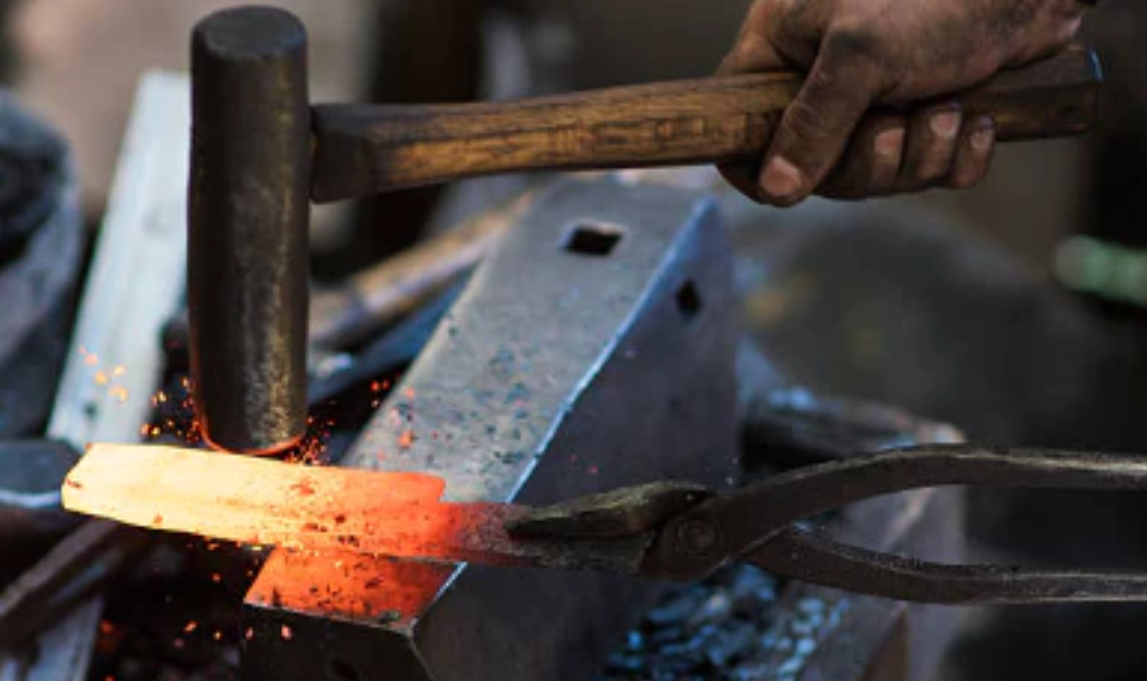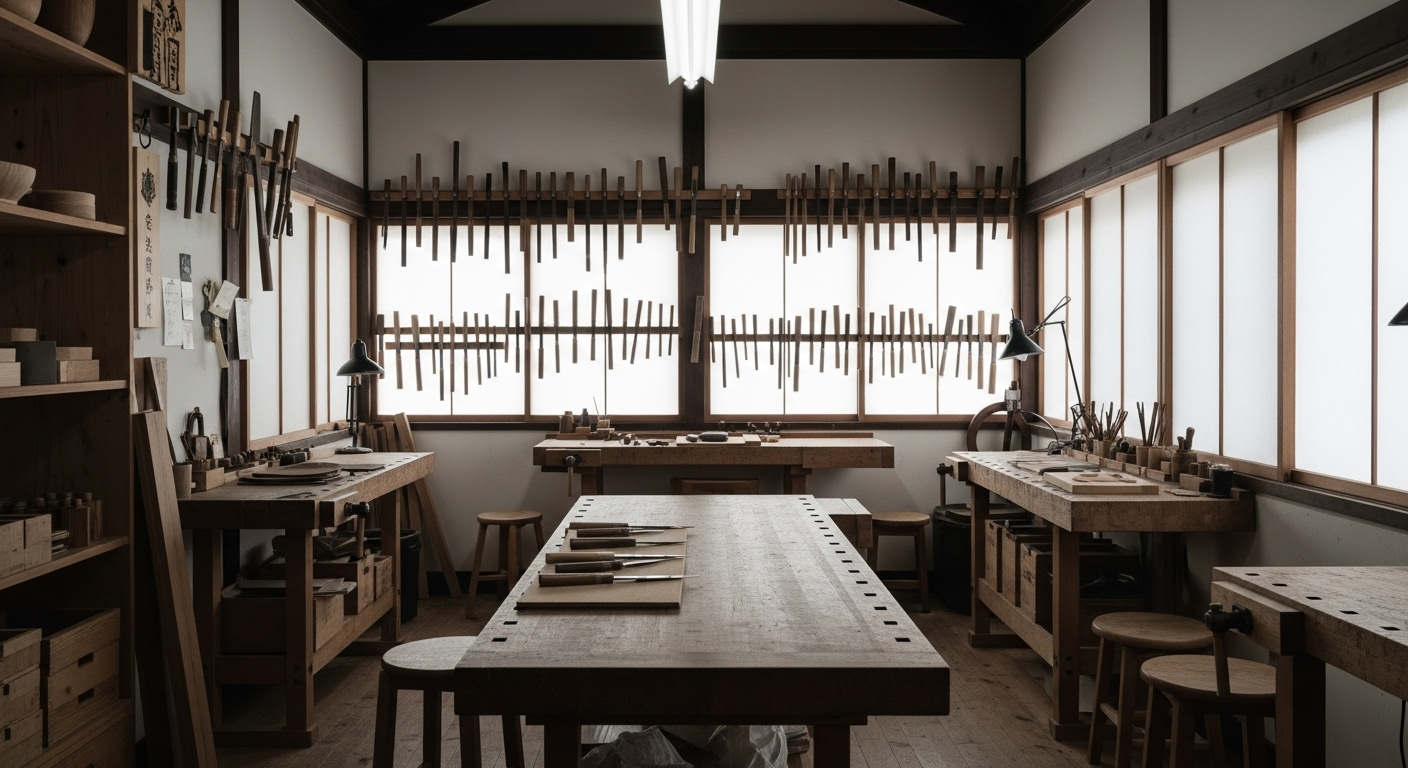
KIREAJI Complimentary Services
-
In Japan, a fine knife is more than a tool —it’s a lifelong companion in the hands of its owner.
At KIREAJI, we honor this tradition by sending each knife with two gifts:
a hand-crafted magnolia saya — a wooden sheath that protects both the blade and its user —
and an optional Honbazuke sharpening, giving your knife a precise, ready-to-use edge from day one.Craftsmanship, care, and a knife prepared to grow with you —this is where your culinary journey begins.
-
KIREAJI Complimentary Services — More Than Extras, They’re Part of the Journey
-
At KIREAJI, purchasing a knife is not the end of a transaction — it’s the beginning of a lifelong relationship with a remarkable tool. To honor that, we offer two complimentary services, each rooted in Japanese tradition.
-

1. A Custom Saya — Your Knife’s First Guardian
The Essential Guide to Saya Sheaths for Japanese KnivesA saya is a hand-fitted wooden sheath that protects the blade from chips, dulling, and accidents.
Our saya are made from Japanese magnolia, valued for being:- Lightweight yet durable
- Moisture-resistant
- Gentle on the blade
For centuries, magnolia has been trusted for both knife handles and sheaths. When you slide your blade into its custom saya, it’s more than storage — it’s a ritual that marks the knife as truly yours.
-

-
2. Free Honbazuke — A Ready-to-Use Edge
HonbazukeTraditionally, Japanese knives are shipped without a final edge, both to protect the blade during international delivery and to allow the owner to shape the knife to their preference.
At KIREAJI, we honor that tradition but also listen to our customers. Many wish to use their knife immediately, so we provide a complimentary “ready-to-use” Honbazuke finish. While not a full artisan-level edge, it is hand-sharpened to deliver precision from the first cut. Over time, as you sharpen and use the knife, the edge will evolve — becoming uniquely your own. -
More Than a Tool — A Lifelong Companion
These services are not extras. They are our way of saying: your knife is meant to stay sharp, safe, and personal — for a lifetime.
Your Knife’s Journey Begins Here
-

A KIREAJI knife begins its life with you through two gifts:
a custom-made saya for protection, and a hand-sharpened edge ready to use from day one.
Together, they mark the moment your knife becomes truly your own. -
FAQ About KIREAJI Complimentary Services

Q1. Do all knives come with a saya (wooden sheath)?
Yes. Every KIREAJI knife includes a handcrafted magnolia wood saya, tailored precisely to the blade at no additional cost. The saya not only protects the edge but also honors the craftsmanship of the knife itself. For certain specialty models, we may contact you to confirm the best fit.
Q2. How is the saya made?
Each saya is crafted from Japanese magnolia wood, carefully shaped to match the unique geometry of the blade. Magnolia is gentle on steel, lightweight, and naturally resistant to moisture, making it the ideal material for protecting Japanese knives.
Q3. Do you offer saya for left-handed knives?
At present, we do not produce fully mirrored left-handed saya. For left-handed knives, we provide the closest-fitting sheath available. We sincerely appreciate your understanding, and our team is happy to advise you on the best solution.
Q4. Can I wash the saya with water?
We recommend keeping the saya dry. Because it is made of natural wood, prolonged exposure to water can cause swelling or cracking. If it becomes wet, gently wipe it with a soft cloth and store it in a cool, well-ventilated place.
Q5. How can I request complimentary Honbazuke sharpening?
At checkout, simply select the option “Request Honbazuke Sharpening.” Unlike most Japanese knives, which are traditionally shipped without a final edge to protect the blade and allow personalization, KIREAJI offers a complimentary ready-to-use Honbazuke finish. This ensures your knife arrives sharp and functional from the very first cut.
Q6. What level of sharpening does it offer?
Our complimentary Honbazuke edge is carefully hand-sharpened to deliver precision and comfort right away, though it is not intended as a full artisan-level finish. Instead, it provides a strong foundation for you to refine over time. As you sharpen and use the knife, the blade will naturally evolve, developing an edge that reflects your own style and technique — truly becoming your personal tool.

The Soul of Craftsmanship
-
Achievement Is Not Just About Success
In true craftsmanship, results are not defined by how many times we succeed. More often, it is through failure that we discover new possibilities. Each mistake reveals a lesson, and each setback pushes us to refine our technique further.
-
To walk the path of mastery is to accept detours, struggles, and repeated trials. These experiences are not wasted—they form the foundation of growth. A knife polished over and over again carries not only sharpness but also the story of perseverance that shaped it.
-
That is why we believe real achievement lies not in flawless success, but in the ongoing journey of growth. Every blade we create is proof of this spirit, embodying both the struggles and the breakthroughs that make true craftsmanship possible.

Experience the sharpness trusted by 98% of Japan’s top chefs — handcrafted in Sakai City.
Through our exclusive partnership with Shiroyama Knife Workshop, we deliver exceptional Sakai knives worldwide. Each knife comes with free Honbazuke sharpening and a hand-crafted magnolia saya, with optional after-sales services for lasting confidence.
KIREAJI's Three Promises to You
-

1. Forged in the Legacy of Sakai
From Sakai City—Japan’s renowned birthplace of professional kitchen knives—each blade is crafted by master artisans with over six centuries of tradition. Perfectly balanced, enduringly sharp, and exquisitely finished, every cut carries the soul of true craftsmanship.
-

2. Thoughtful Care for Everyday Use
Every knife includes a hand-fitted magnolia saya for safe storage. Upon request, we offer a complimentary Honbazuke final hand sharpening—giving you a precise, ready-to-use edge from day one.
-

3. A Partnership for a Lifetime
A KIREAJI knife is more than a tool—it is a lifelong companion. With our bespoke paid aftercare services, we preserve its edge and beauty, ensuring it remains as precise and dependable as the day it first met your hand.






